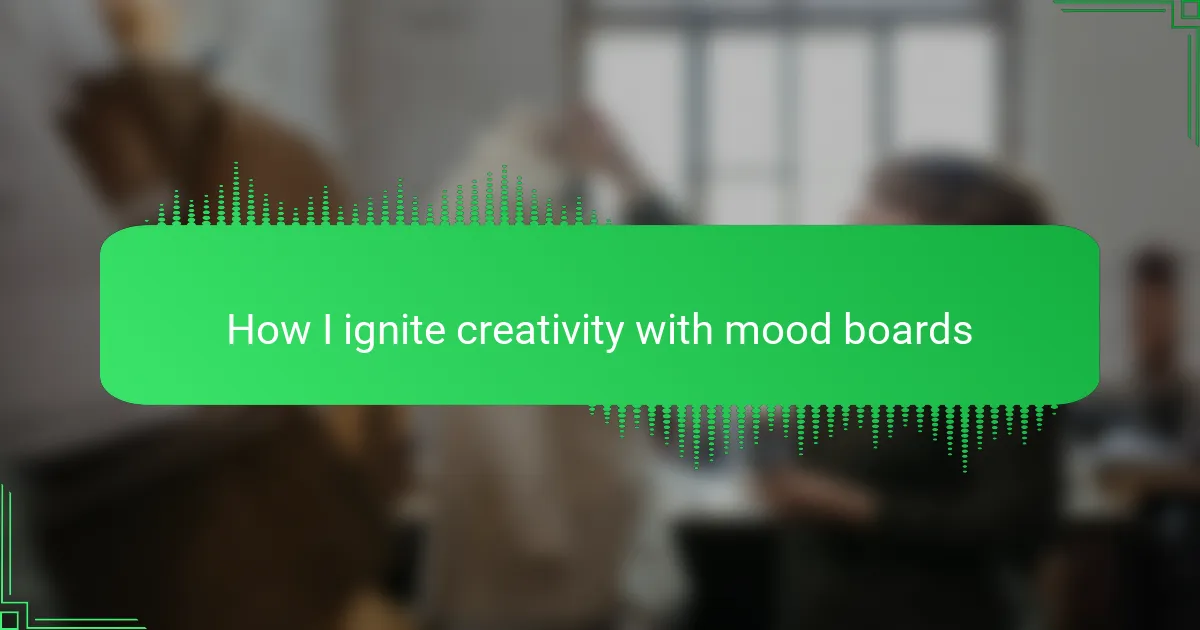Key takeaways
- Mood boards visually unify ideas, enhancing creativity and design focus.
- They clarify themes and streamline the design process by reducing trial and error.
- Essential elements include color palettes, typography, imagery, and textures.
- Effectively organized mood boards promote workflow efficiency and inspire fresh concepts.
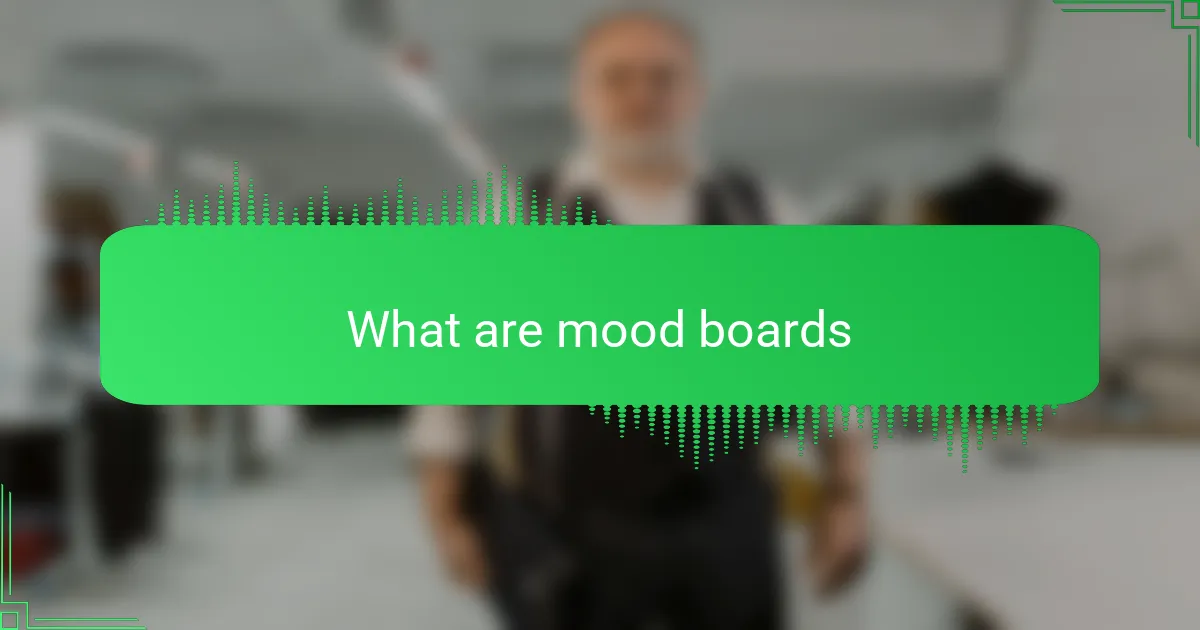
What are mood boards
Mood boards are visual tools that bring together images, colors, textures, and typography to form a cohesive theme or concept. From my experience in t-shirt design, they serve as a creative compass, helping me channel ideas into a clear vision before sketching. They not only spark inspiration but also keep my projects focused and aligned with the mood I want to convey.
| Mood Boards | Without Mood Boards |
|---|---|
| Visual collection of ideas and inspiration | Reliance on memory and scattered thoughts |
| Helps in maintaining a consistent design direction | Greater risk of inconsistent or unfocused designs |
| Facilitates experimentation with colors and styles | Less structured experimentation, often more trial and error |
| Enhances communication when collaborating | More challenging to explain abstract ideas clearly |
| Boosts creative confidence and motivation | Can lead to creative blocks or uncertainty |

Benefits of mood boards in design
Mood boards have been a game changer for me in the t-shirt design process. They help me organize my thoughts and inspiration visually, making abstract ideas feel tangible. I often find myself more motivated and confident when I see a collection of colors, textures, and images come together, guiding my creative flow with clarity.
From my experience, mood boards reduce the overwhelm of starting from a blank canvas. They act like a visual anchor, keeping my designs focused and cohesive. Here are some benefits I’ve noticed when using mood boards:
- Spark new ideas by combining unexpected elements
- Clarify the overall theme and style before designing
- Save time by narrowing down color schemes and patterns early
- Enhance communication when collaborating with clients or teams
- Provide a visual reference to stay consistent throughout the project
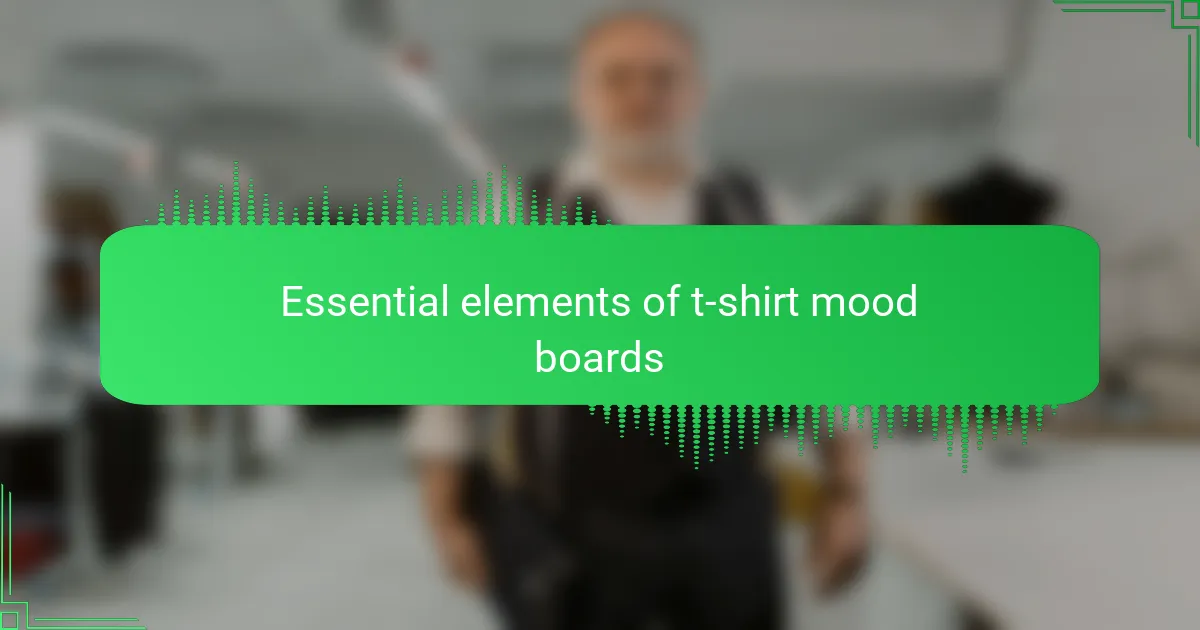
Essential elements of t-shirt mood boards
| Element | Why It Matters |
|---|---|
| Color Palette | Colors set the emotional tone. I always start with colors that resonate with the vibe I want to evoke—whether it’s energetic, calm, or bold. |
| Typography | Fonts convey personality. I pick styles that align with the message and style of the t-shirt design to create a cohesive mood board. |
| Imagery | Images inspire ideas. Including photos, illustrations, or patterns helps me visualize how elements might interact on the shirt. |
| Texture Samples | Textures add depth. When I include fabric swatches or texture ideas, it reminds me of the tactile feel the final product should express. |
| Inspiration Sources | References spark innovation. I collect anything from art, nature, or pop culture that fuels my creativity and keeps my designs fresh. |
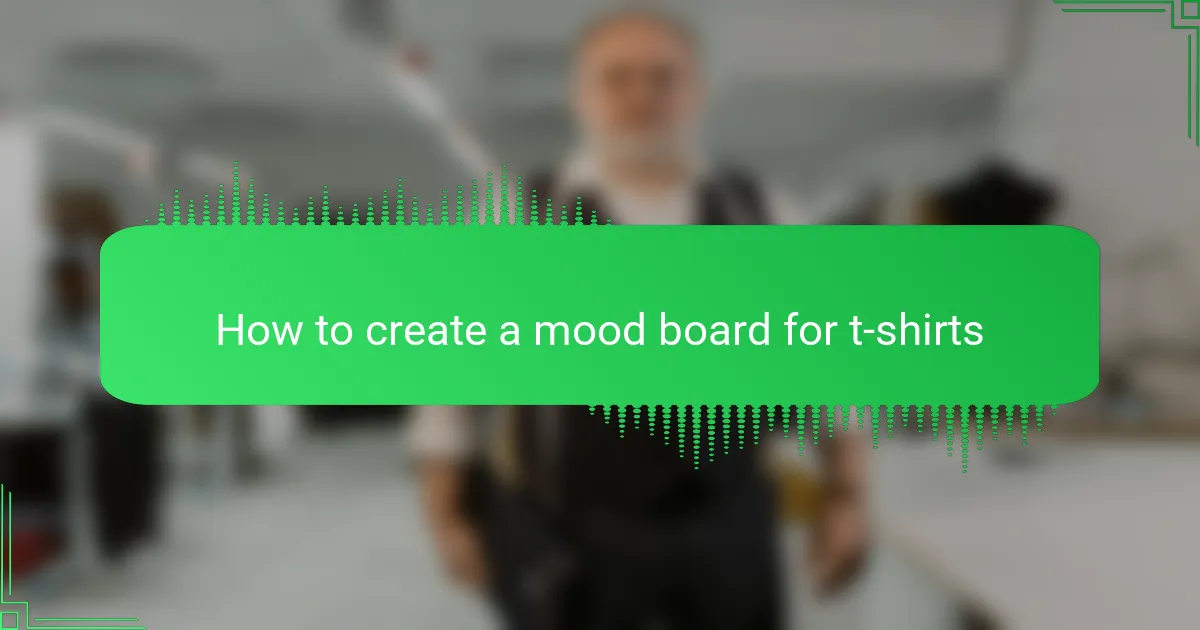
How to create a mood board for t-shirts
Creating a mood board for t-shirts starts with gathering inspiring visuals that capture the vibe you want to deliver. From my experience, mixing photos, textures, and color swatches really helps set the tone before sketching any design. It’s like giving your creativity a clear direction, which keeps ideas from scattering everywhere.
| Step | What I Focus On |
|---|---|
| Collect Visuals | Images, patterns, and colors reflecting the theme |
| Organize Elements | Arrange pieces to tell a cohesive story or mood |
| Review & Refine | Remove anything that feels off or distracting |
| Use as Reference | Keep the board visible during the design process for consistency |
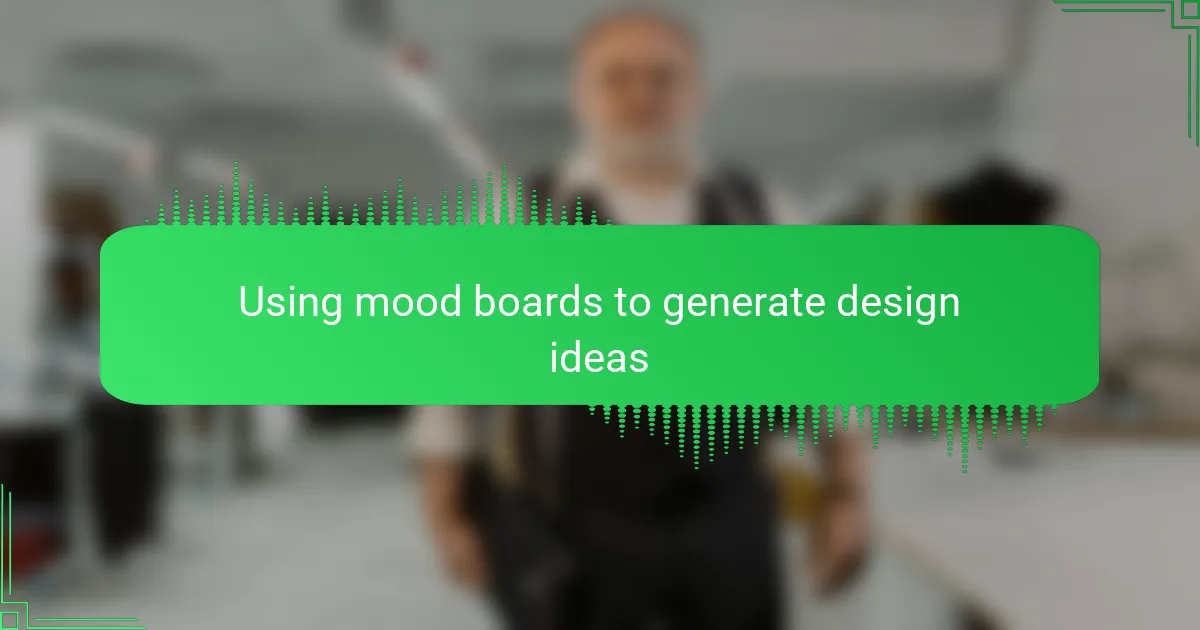
Using mood boards to generate design ideas
Using mood boards has been a game-changer for me when brainstorming t-shirt designs. By collecting images, colors, textures, and typography that resonate with the vibe I want, I find my creativity flows more naturally. It’s like giving my mind a visual playlist that inspires fresh ideas instead of starting from a blank canvas.
Sometimes, I notice patterns emerging on my mood boards that I hadn’t consciously planned, which leads me to unexpected design directions. This process feels less forced and more joyful because I’m connecting emotionally with the elements I choose. For me, mood boards are not just a tool; they’re a creative spark that fuels my best work.
| Aspect | Using Mood Boards |
|---|---|
| Idea Generation | Visual inspiration clustered in one place, sparking multiple concepts quickly |
| Creativity Flow | Encourages organic, emotionally-driven design ideas rather than forced thinking |
| Design Direction | Helps identify recurring themes and color schemes to guide final designs |
| Emotional Connection | Creates a personal attachment to the project through curated visual elements |
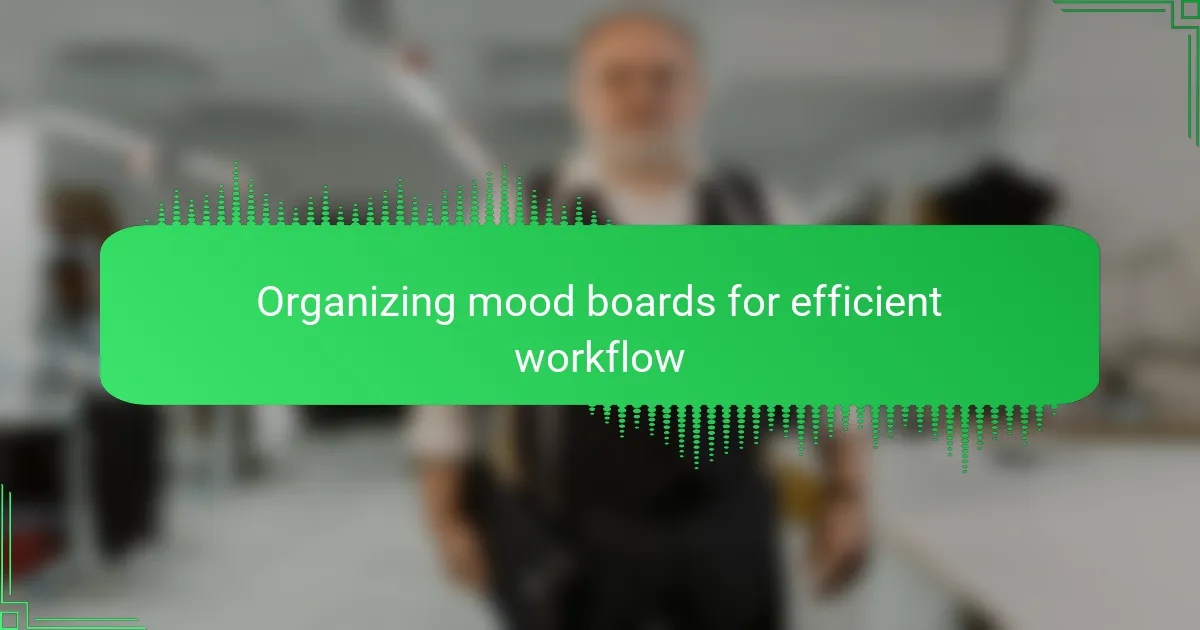
Organizing mood boards for efficient workflow
Organizing mood boards effectively has been a game-changer for my t-shirt design workflow. I’ve found that grouping images and color palettes by theme or project phase helps keep my ideas clear and accessible. This simple structure not only saves time but also sparks more focused creativity when I revisit the board later.
| Method | Benefit |
|---|---|
| Theme-Based Grouping | Streamlines visual storytelling by clustering related concepts |
| Project Phase Sorting | Keeps work organized from initial ideas to final tweaks |
| Color Palette Segmentation | Helps maintain consistent mood and tone across designs |
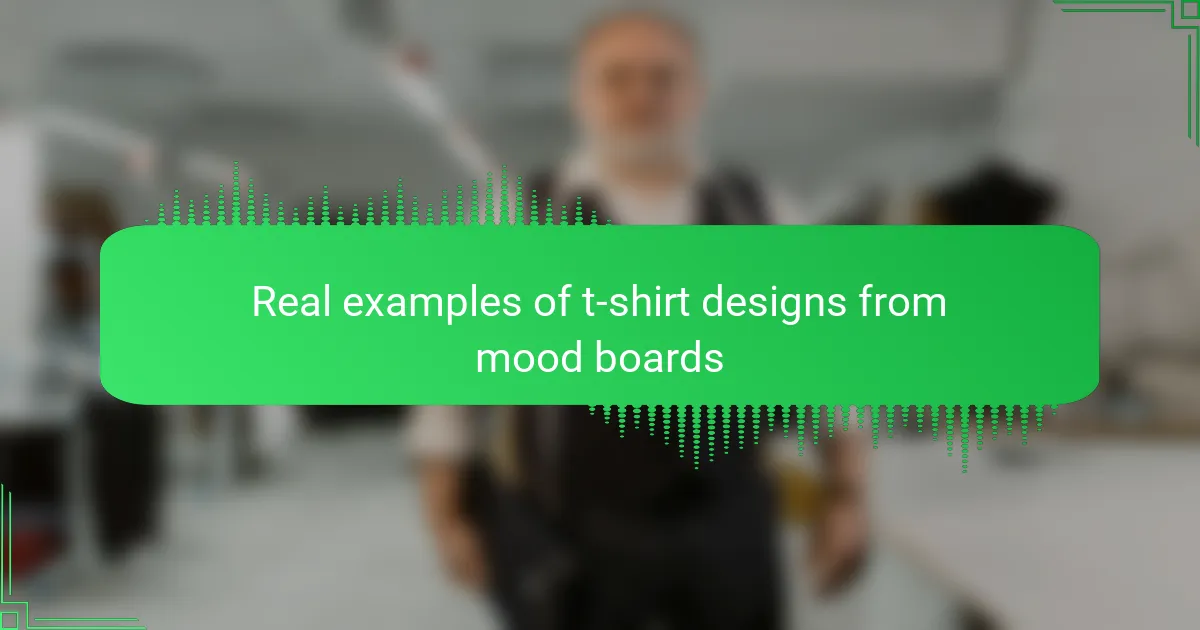
Real examples of t-shirt designs from mood boards
One time, I created a mood board centered around vintage travel posters, mixing bold reds, sun-bleached yellows, and classic serif typography. The resulting t-shirt design featured streamlined graphics and nostalgic text that captured that old-world charm perfectly. It was fascinating to see how the mood board shaped every element, from color choices to layout, making the design feel uniquely cohesive.
Another example comes from a project where I used a mood board of urban street art and graffiti textures. At first, it felt chaotic, but pulling together those raw, energetic images helped me translate that vibe into dynamic brushstroke patterns on the shirt. The mood board acted like a bridge between abstract inspiration and a tangible design, guiding me through the creative chaos.
Have you ever noticed how a strong mood board can almost tell the story of your final product before it even exists? I experienced this firsthand with a nature-inspired board filled with forest greens, leaf textures, and delicate script fonts. As I designed the t-shirt, everything clicked—each element felt purposeful, proving how mood boards not only ignite creativity but also nurture confidence in the design’s direction.
